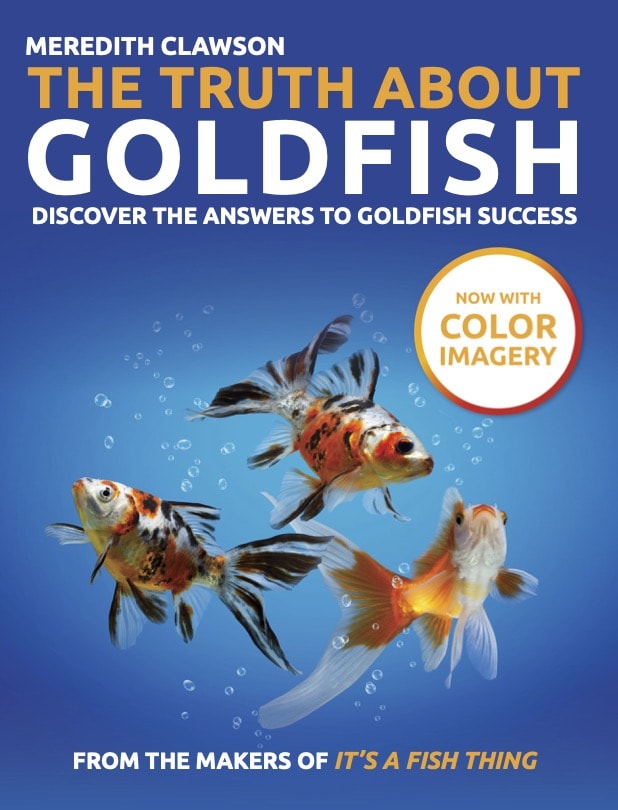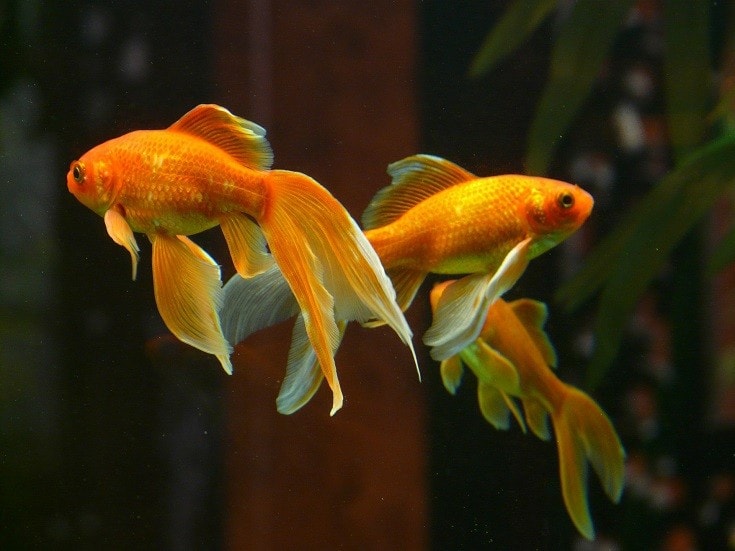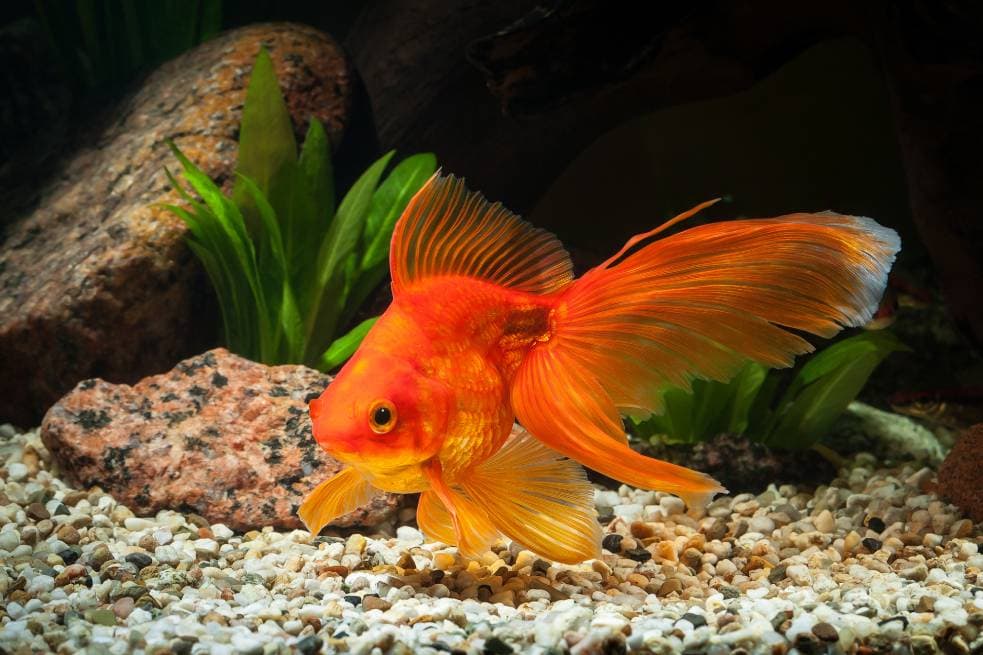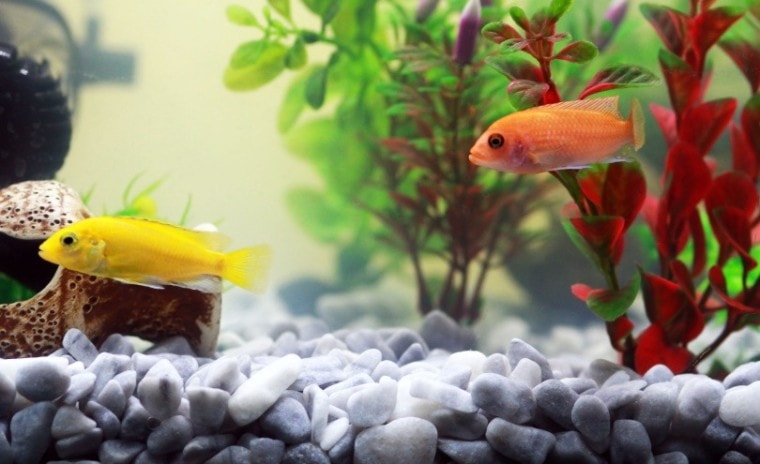
Everyone wants to have an aesthetically pleasing tank to view. This brings both comfort and tranquillity to the fish keeper and provides a lush environment for your goldfish to thrive in.
It is rewarding to look at a crafted tank with various colors and themes to match the environment in which the tank is kept. Not only will your goldfish thank you for providing shelter and enrichment into its life, but it will also make them stand out more than if they were in a boring sparsely decorated tank.
When it comes to decorating and designing the interior tank layout, many fish keepers do not know where to start. Fortunately, this guide will help you professionally and easily aquascape your goldfish tank!
Top 10 Pro Tips to Aquascape Your Goldfish’s Aquarium
1. Design the Layout
Draw up a rough sketch of what you wish to achieve with your aquascape. You should also plan what type of aquascape you are looking to do. Minimalist and Iwagumi aquascapes are best for large goldfish who need a lot of swim space. Whereas smaller goldfish will be content in a Dutch or natural aquascape design. Consider the size of your aquarium and what type of filters and aeration systems you will be using. If you find the aquarium equipment an eyesore in your aquascape, you can hide them behind tall and bushy plants if they do not obstruct the purpose of the equipment.
2. Type of Goldfish
Before you begin adding hardscape and substrate material, you should consider the type and color of goldfish you will be getting. This is important beforehand and is essential. Common and comet goldfish will require larger aquariums than the smaller fancy varieties will need. Single-tailed goldfish can also tolerate cooler water temperatures and may not require a heater to keep the temperature stable over 68°F (20°C). This will also help you determine the size of each hardscape to purchase so that it allows a swim room for the goldfish.
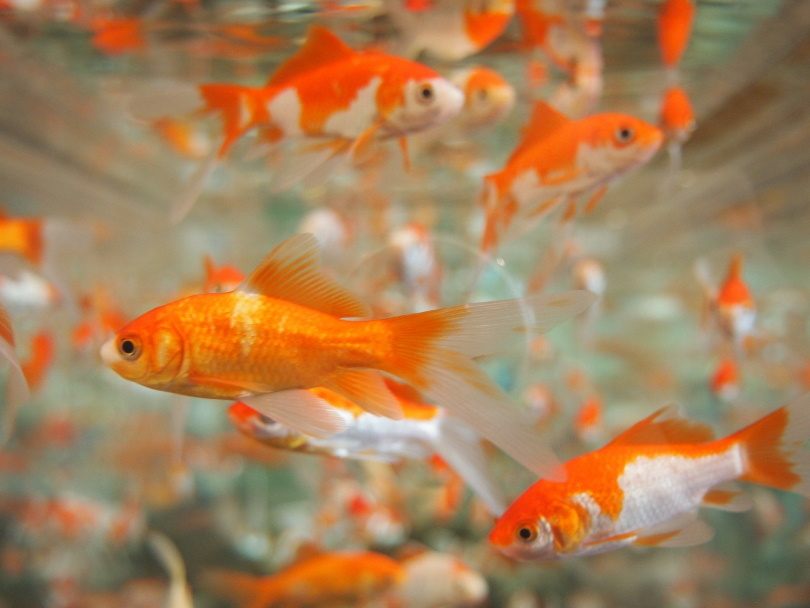
3. Substrate
This is where your plants will do most of their growing. You will need to use fine sand that is at least two inches deep to allow the plant to root properly. If you find your goldfish uproot the plants, you can use plant anchors to keep them down. Choosing the color tone of your substrate is also important, this will determine if it clashes with the rest of the hardscape materials.
Housing a goldfish isn't as simple as buying a bowl. If you're a new or experienced goldfish keeper who wants to get the setup right for your goldfish family, check out the best-selling book, The Truth About Goldfish, on Amazon. It covers all you need to know about the ideal tank setup, tank size, substrate, ornaments, plants, and so much more!
4. Hardscaping
This is where you will choose the types of wood and rocks for the aquascape. This can be bogwood, driftwood, Mopani wood, and various types of rocks or stones. Ensure that each hardscape piece is safe for use in aquariums. If you plan to do the Iwagumi technique, ensure that no rocks can be knocked over as this will crush or entrap your goldfish. Hardscape is the essential piece needed to bring the whole aquascape together. Keep in mind you can place plants in crevices between the rocks to enhance the overall view.
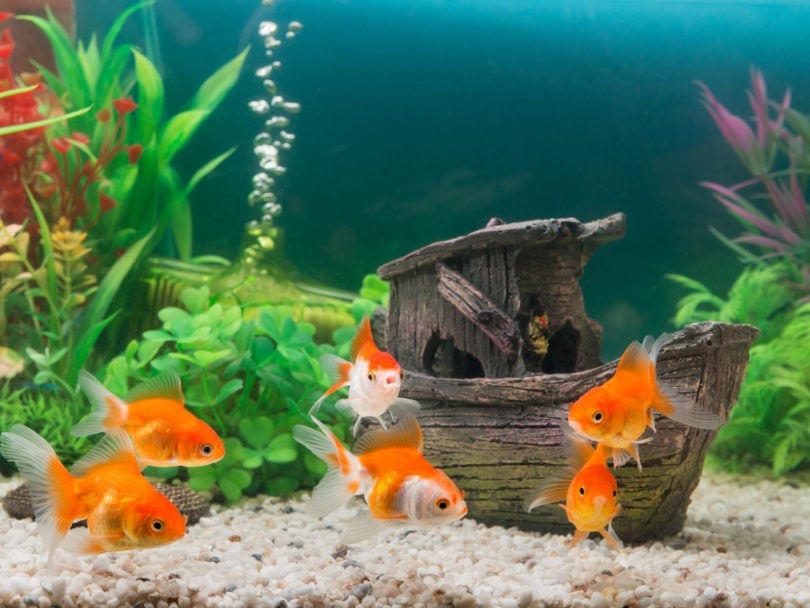
5. Live Plants
The best part of an aquascape is putting together different varieties of aquatic plants. You ideally want to choose plants that your goldfish do not like to eat. This would usually plant like anubias, Amazon sword, or hornwort. There are not many options when it comes to choosing plants for a goldfish aquarium. They are known to regularly rip plants out from the roots and consume them overnight. Choosing sturdy and thick-leaved plants to aquascape with will be the best for goldfish.
6. Water
The next method is to choose the aquarium’s source of water. You have the main options of rain, tap, bottled, and borehole water. All these water sources will need to be dechlorinated to remove any chlorine and heavy metals. You can add tannins into the water with driftwood or Indian almond leaves. Adding tannins into the water helps to bring out the natural watercolors that goldfish experience in the wild.
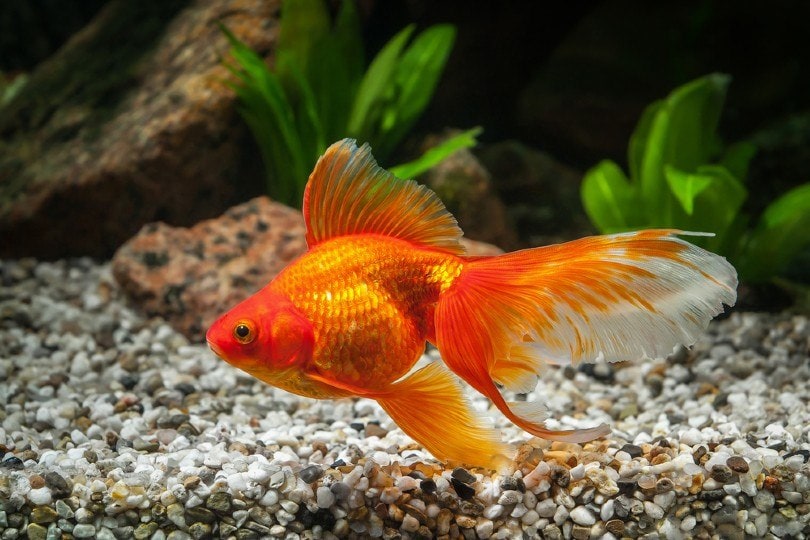
7. Equipment
Once you have set up all your decorations, it is then time to start choosing the equipment that you want to add to the tank. You want a filter that can filter five times the water volume in a minute. There are many types of filters to meet your standards and blend into the tank. You should also choose the type of aeration system you want to run in your tank to oxygenate the water. The main types can be a waterfall system, air stone, and air stone.
8. Lighting and Fertilizers
This is an important set for planted aquascapes, and lights will help your plants to grow beautifully. Fertilizers are also necessary since commercial water sources lack the valuable minerals the plants will need to grow. Do not add too much fertilizer too frequently as it can do more harm than good. If you have a large variety of plants, they will all be competing for nutrients within the water, and this will cause nutrients and minerals to quickly diminish.
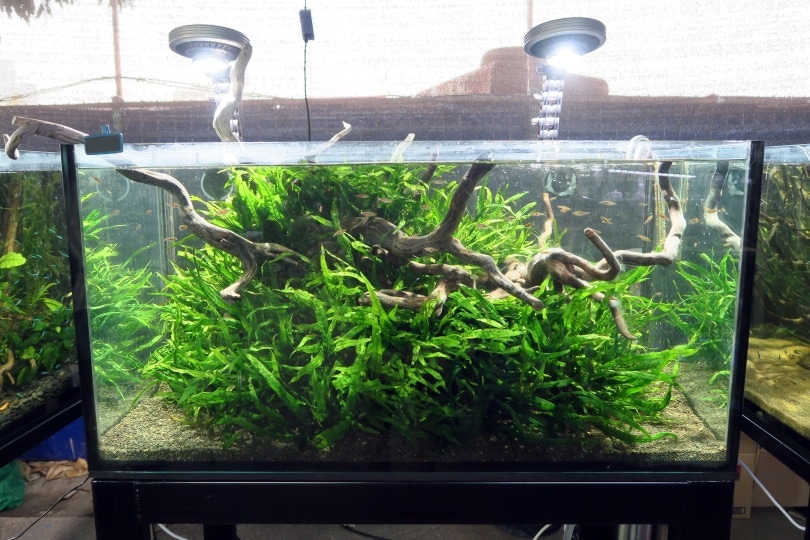
9. Cycle the Aquarium
Once everything is set up and the filter is running, you do not want to rush to add goldfish yet. Every new tank set up should be cycled for at least three to six weeks. This is also known as the nitrogen cycle and beneficial bacteria convert toxic ammonia to a much safer water chemical which is nitrate. You can kick start the cycle by using old filter media from another tank inside of the aquascaped tank’s filter so that you can shorten the amount of time you wait for your tank to cycle. Doing a water test with a liquid testing kit will give you an accurate reading of the current parameters. Once the ammonia and nitrite read 0ppm and the nitrate is below 30ppm, your tank is cycled.
10. Hoods or Canopies
This is optional but beneficial if you want to stop any goldfish from jumping out of the tank. Some hoods or canopies will come with built-in LED lights to enhance the view of the tank and aquascape. Make sure that you choose a size that fits your tank and does not hang over the front or sides. Adding a hood or canopy also helps to make the tank look complete and more professional.

Aquascaping
This is the term used to describe the skill of designing the layout of the body of waters like aquariums and ponds using hardscapes like rocks, wood, stones, and a variety of different species of live aquatic plants. It can be described as a type of underwater gardening and can require minimal to advanced skill. Aquascaping an aquarium can be difficult for smaller tanks where everything must be carefully sized to still leave a swim room for the inhabitants. It can take years to develop the skill to perfectly aquascape an aquarium or pond, and many novice aquarists will start with a minimalist variation of aquascaping.
Not only is aquascaping pleasing on the eye, but it also provides a lot of inner praise once all the hard work and dedication are completed.
Maintaining the Aquascape
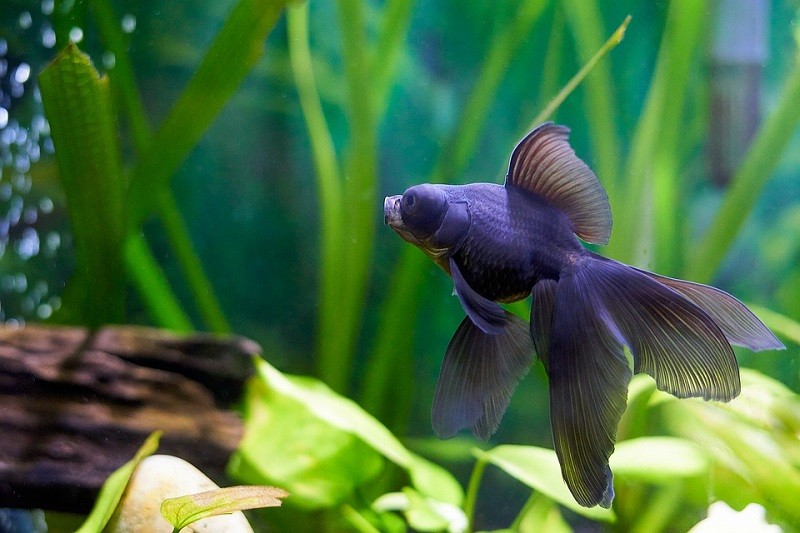
Lighting and plant fertilizers are essential in the upkeep of an aquascaped aquarium. To get the live plants to flourish, you will need to have a good lighting set up tailored towards the brightness the certain plants require to grow and photosynthesize. You may also develop problems with different types of algal growth on the grass, leaves, and rocks within the aquarium. Algae can be effectively removed with an old toothbrush for surfaces within the tank and a magnetic algae wiper for the glass.
The water will still need to be regularly replenished to keep the water clean. Fish and invertebrates will require both a filter and aeration system inside of the tank. Plants take in oxygen when they are not in light and this can cause the inhabitants to suffocate without proper surface agitation. If you plan to aquascape a tropical tank, you will also need a heater.
Types of Aquascapes
Final Thoughts
Aquascaping an aquarium is a fun experience that will help your aquarium layout expand. Aquascaping a goldfish tank is ideal and wins over bare tanks or plastic decorations. Although aquascaping is more expensive than placing commercial plastic decorations around the tank, it adds more vibrancy and life to your goldfish aquarium while looking sophisticated and unique.
We hope this guide has helped you to decide how you are going to aquascape your goldfish’s home.
Featured Image Credit: Piqsels

